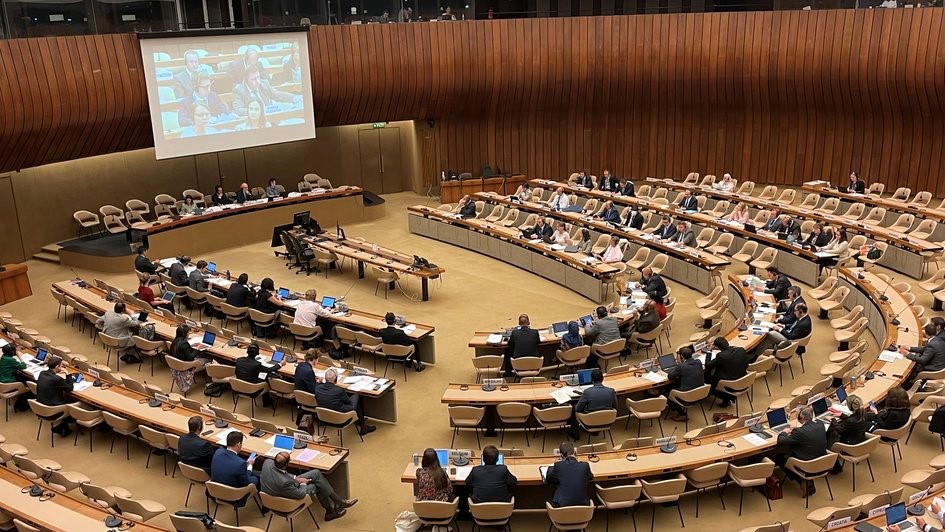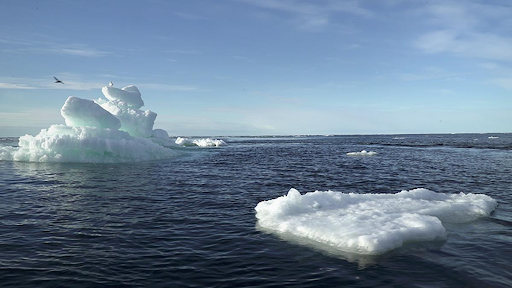Description

Disclaimer: Copyright infringement not intended.
Context
- Foreign Secretary Vinay Kwatra, UN discussed about India’s presidency of the Conference on Disarmament.
Conference on Disarmament
About
- The Conference on Disarmament (CD) is a multilateral disarmament forum.
- It was established by the international community to negotiate arms control and disarmament agreements based at the Palais des Nations in Geneva.
History
- The Conference was first established in 1979 as the Committee on Disarmament as the single multilateral disarmament negotiating forum of the international community.
- It was renamed the Conference on Disarmament in 1984.

Agenda behind its Formation
- The Conference was created with a permanent agenda, also known as the "Decalogue", which includes the following topics:
- Nuclear weapons in all aspects
- Other weapons of mass destruction
- Conventional weapons
- Reduction of military budgets
- Reduction of armed forces
- Disarmament and development
- Disarmament and international security
- Collateral measures; confidence building measures; effective verification methods concerning appropriate disarmament measures, acceptable to all parties
- Comprehensive programme of disarmament leading to general and complete disarmament under effective international control
- Additionally, all decisions of the body must be agreed upon by consensus according to the rules and procedures of the conference.
Meeting Sessions
- The Conference meets annually in three separate sessions in Geneva.
Relationship with the United Nations
- The Conference is formally independent from the United Nations.
- However, while it is not formally a UN organization, it is linked to it in various ways.
- First and foremost, the Director-General of the United Nations Office at Geneva serves as the Secretary-General of the Conference.
- Furthermore, while the Conference adopts its own rules of procedure and agenda, the United Nations General Assembly can pass resolutions recommending specific topics to the Conference.
- Finally, the Conference submits a report of its activities to the General Assembly yearly, or more frequently, as appropriate.
- The Conference on Disarmament Secretariat and Conference Support Branch of the United Nations Office for Disarmament Affairs, based in Geneva, provides organizational and substantive servicing to the Conference on Disarmament, the single multilateral disarmament negotiating forum of the international community.
Work of the Conference
- Initially, the Conference and its predecessors were successful in meeting their mandate.
- They were instrumental in drafting numerous arms control agreements: most importantly:
- the Treaty on the Non-Proliferation of Nuclear Weapons (1968),
- the Biological Weapons Convention (1972),
- the Chemical Weapons Convention (1993) and
- the Comprehensive Nuclear-Test-Ban Treaty (1996).
.jpg)
Membership
- Members countries of the Conference on Disarmament
- The conference is currently composed of 65 formal members, representing all areas of the world, as well as all known nuclear-weapon states.
- Additionally, members are organized into several informal regional groups to facilitate their preparation for, and representation in the plenary meetings of the Conference.
- Note: India is a member.
|
PRACTICE QUESTION
Q. Consider the following statements:
1.The Director-General of the United Nations Office in Geneva serves as the Secretary-General of the Conference on Disarmament.
2.The Conference on Disarmament was instrumental in drafting the Comprehensive Nuclear-Test-Ban Treaty.
3.India is a member of the Conference on Disarmament.
Which of the above statements is/are correct?
A) 1 and 3 only
B) 2 only
C) 3 only
D) All
Answer: D) All
|













